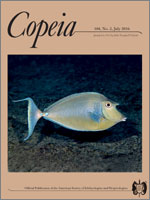Although the timing of amphibians' spring emergence following winter dormancy may vary under the influence of climate change, the behavior of the animals should be more directly a response to the weather and/or other immediate stimuli and may be expected to show some population-level consistencies independent of timing. As such, there should be particular conditions of temperature, precipitation, wind, and/or phase of the lunar cycle at the onset of surface activity in a terrestrially hibernating anuran that may quantitatively differ from prior environmental conditions. Based on 24 years of data from a northern population of Fowler's Toads, we found that the springtime emergence of the toads is associated with increased temperature, relatively little rainfall or wind, and a gibbous moon. This remains true whether the toads emerge relatively early or late in spring. However, the toads' need for warmer temperatures to emerge for the first time in the year appears to significantly decrease the longer they have to wait. After emergence, though, the toads' activity during spring is positively associated with air temperature and negatively associated with wind speed, whereas rainfall and the illumination of the moon are not factors. Thus the environmental conditions necessary to evoke springtime emergence may not necessarily be the same as those that enable the animals' subsequent activity.
BioOne.org will be down briefly for maintenance on 17 December 2024 between 18:00-22:00 Pacific Time US. We apologize for any inconvenience.
How to translate text using browser tools
3 June 2016
Springtime Emergence of Overwintering Toads, Anaxyrus fowleri, in Relation to Environmental Factors
Taylor Green,
Elizabeth Das,
David M. Green
ACCESS THE FULL ARTICLE





